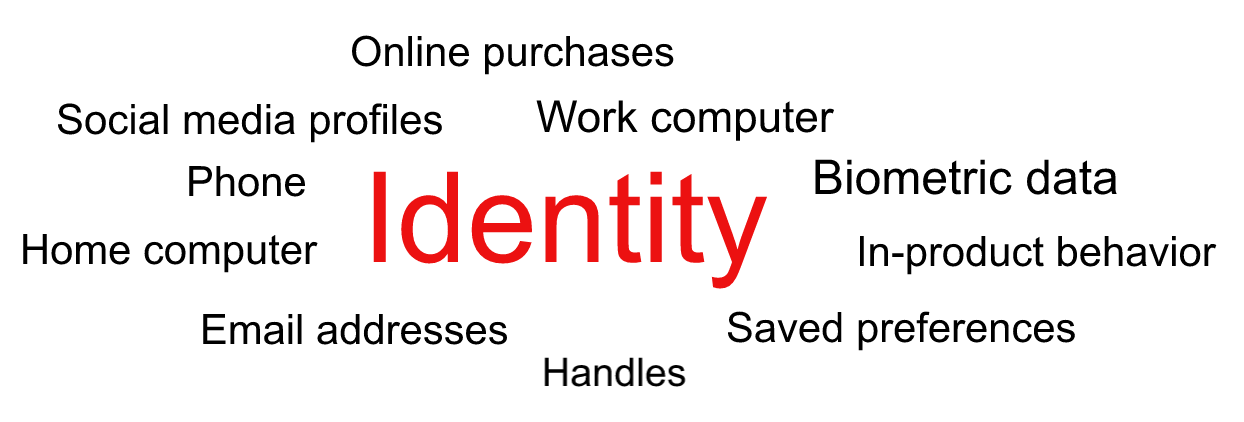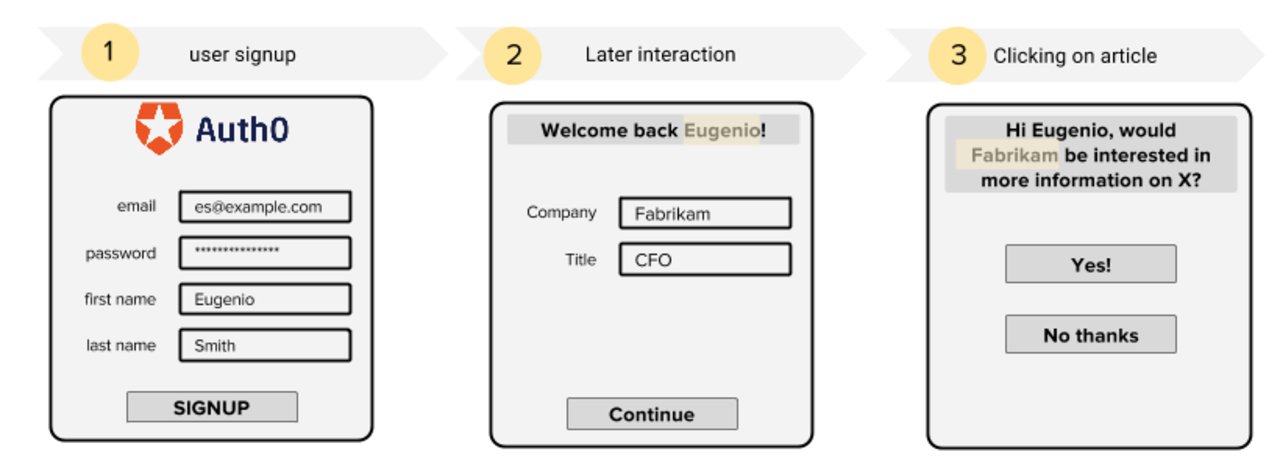Long gone are the days of generic ads that extol the virtues of a product to nobody in particular. Marketing has gotten smarter and more personal every year, and that trend only looks to continue.
To compete with this type of marketing, you have to strategically collect data on your users. To build content that is highly customized to individual tastes, you need to understand what people like and how they behave.
For that, you need modern identity management.
Yes, the identity management of old would not have helped you to create a robust view of your users. But identity management (IAM) today is a powerful tool. A sophisticated IAM can boost your marketing efforts by helping you build a holistic understanding of who is using your product, how they're using it, and who they are as an individual — not just a statistic in a database.
Traditional login doesn't cut it anymore
Simple identity tools act as a barrier between a user and a service. A user wants to interact with a product, so they have to input some information, usually a username and password, that proves they belong in the product.
Contemporary IAM should be much more than that. Identity management no longer means relying on a username and password to 'identify' who someone is. Yes, an IAM needs to secure access to your product, but it should also understand identity is a complicated web of accounts and actions that stem from one person.
If you're still using a simple gatekeeping system, keeping track of all the data that makes up a digital identity — the data that is so valuable for your marketing — is much more difficult than it needs to be.
Collecting information with identity management
A robust IAM is going to help you keep track of user data in a variety of ways.
- Gathering social data. Social data is a crucial part of any online marketing effort. All of the data that social media providers store — your friends, your political interests, what restaurants you check into — is marketing gold. With Auth0, you can take any information stored on their social profile, and add it to the profile your user has in your system to keep track of available data that you don't collect yourself.
- Tracking user behavior. Analyzing your product data is a great way to understand how your users interact with your app. All the information that Auth0 stores, including social data and every login, can be sent straight to your analytics platform of choice with Auth0 Rules, snippets of code that you can use to automate functions at login. This will help you keep track of how users are interacting with your product and will work with the systems you already have in place.
- Remembering user preferences. Having a centralized place to store a users likes and dislikes is critical not just for marketing, but also for building a great experience for your users. From operating platform to social data to login locations, Auth0 stores unique information for each user in a user profile that you can customize to fit your needs. You can even view your product from the perspective of a specific user, allowing you to really understand their product experience.
- Collecting data over time. One of the most effective ways to understand your users is to ask them about themselves. It isn't a good idea to pester your users for every piece of information you want at signup, which is where progressive profiling comes in. With Auth0, you can use your login go gradually gather data over time. Instead of bombarding your user, you might ask where your user works the second time they log in, but ask for their location the fourth.
It's clear that IAM can act as a catalyst for collecting data that will help any company understand their users.
Personalizing your marketing
From your IAM's user profiles, you can begin to build a much more individualized approach to marketing. This could range from a change in the way that you gather marketing data to finding new demographics to target, but it all hinges on the ability to centralize your users' data.
- Integrate all your information. The ability to automate sending information from a user's profile to your analytics or marketing software will make incorporating personal data easy. With Auth0, you can use an existing Rule to send information to a CRM or analytics service, and if there isn't a Rule, you can create a new one in your dashboard. This type of information flow gives you the tools you need to take a full view of your customers when you're sitting down to talk marketing strategy. It will also allow you to cut deeper into different segments of your users and your potential customers. When you have the information to go beyond basic categories in one place, you set yourself up for personalized marketing efforts.
- Make better personas. Although most companies have broad-stroke personas for different types of customers, building customer personas with data can help you fine-tune your marketing. When you look at the internal profiles you built for your users, what are the common threads? For example, if men in large cities are your most heavy users of social features, that's valuable information to add to your broader ideas of who is using your product and how to appeal to them. If you have a persona of an urban man, adding in the social interest will help you better understand how to reach that audience.
- Supercharge your targeting. Thanks to social media, it's pretty easy to target your marketing efforts. Giving an absolutely personalized marketing experience might not be feasible, but getting granular details right will help you reach the right people in the right way. When you have kept a full profile for each user, it's easy to understand how to appeal to them more directly. You probably already target to an extent, like not touting your Android capabilities to iOS users. But when you can target down to political views, favorite sports teams, public transportation use or household income, you've got a much smarter marketing campaign in the works.
They key here is that your IAM has already done the hard work by gathering and consolidating your data, and even sending it to the right place. You are not only tapping into your users' preferences and behaviors, but you're also immediately able to put that knowledge to work for your marketing team.
It's time to upgrade
It's pretty clear that a simple login system isn't going to cut it anymore. Modern identity management is something that goes beyond gatekeeping your product and instead actually offers you and your users value.
It's not always obvious that your IAM can directly contribute to your revenue and your marketing efforts. But when you upgrade your systems to be a powerful database of identities rather than just a way to validate users, you can tap into all of that potential.
About the author

Martin Gontovnikas
Former SVP of Marketing and Growth at Auth0 (Auth0 Alumni)
Gonto’s analytical thinking is a huge driver of his data-driven approach to marketing strategy and experimental design. He is based in the Bay area, and in his spare time, can be found eating gourmet food at the best new restaurants, visiting every local brewery he can find, or traveling the globe in search of new experiences.View profile



